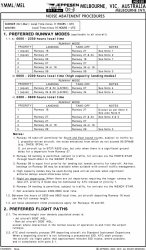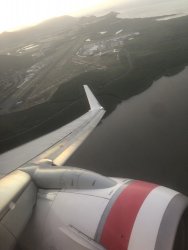The Melbourne Noise Abatement Procedures outline that between 6.00 am and 11.00 pm, when there is not heavy traffic, Runways 16 and 27 are equally preferred for landing. Runway 27 used in combination with Runway 34, and Runway 27 used alone, are equally preferred for departures.
During busy periods between 6.00 am and 11.00 pm, Runways 27 and 34 used in combination and Runways 34 and 09 used in combination are equally preferred.
At night, between 11.00 pm and 6.00 am, the preferred runway for arrivals is Runway 16 and for departures is Runway 27.
















